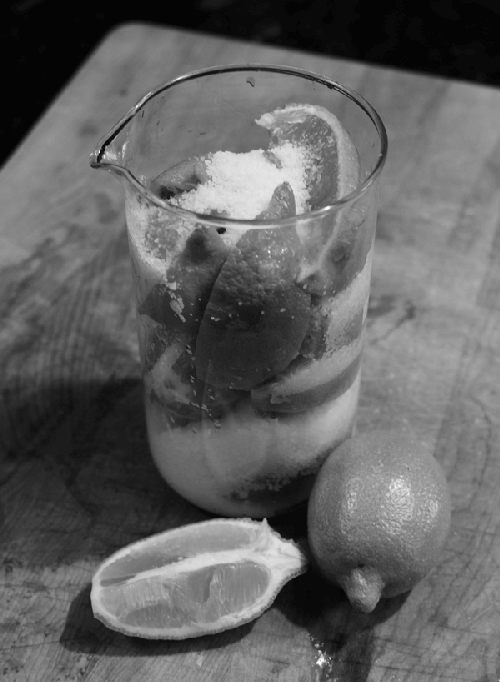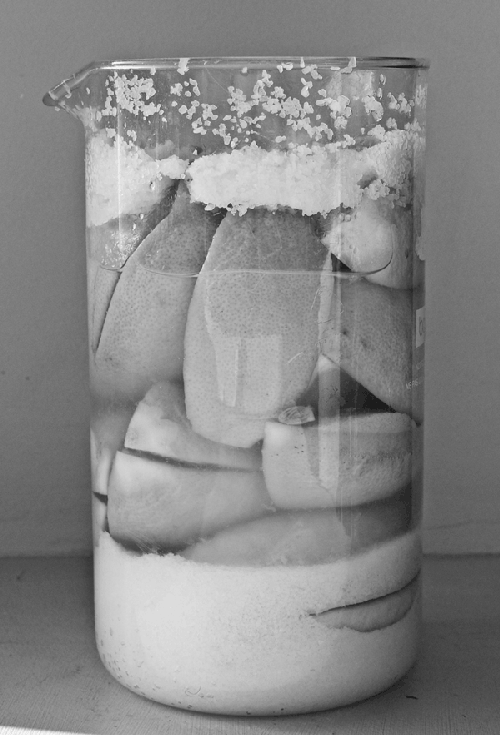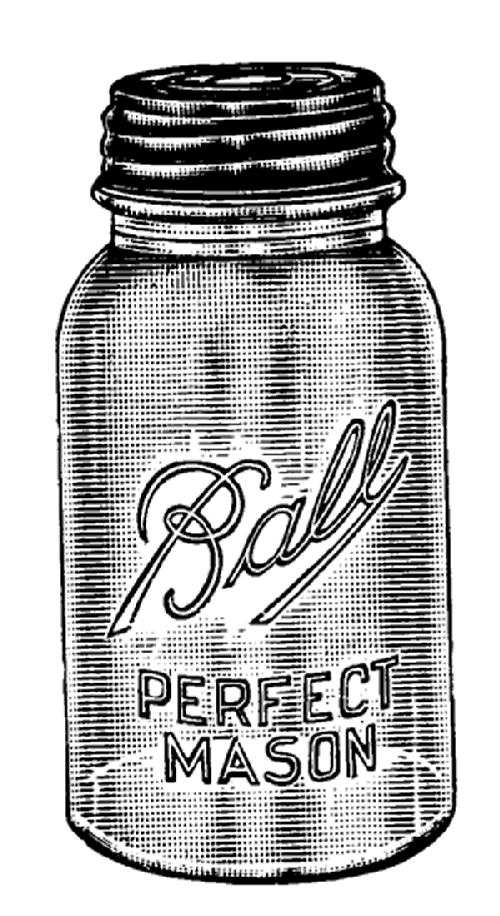All you need are washed and preferably organic lemons (either Eurekas or Meyers),
kosher salt, and a glass jar with a tight lid that has been sterilized by running it
through the dishwasher.

Make two cuts (lengthwise) in each lemon so that the quarters created remain
attached. Stuff kosher salt into the crevices of the lemons. Then place the salted
lemons tightly into the glass jar. If I have one or two leftover lemons, I’ll often
squeeze the juice into the jar before closing it. But you don’t have to. This just
gives the lemons a little bit of a head start.
Place the jar on a countertop and then just watch and wait. Over the next few
days, more and more juice will exude from the lemons, filling the jar. You can give it
a shake now and then—or not—to keep the salt blended well in the liquid. In about
three weeks, the lemons will get very soft and the brining liquid thick and cloudy.
Once that happens, you can store the jar in the refrigerator. As long as the brine
covers the lemons, they’ll keep for about a year refrigerated.

To use, pick a lemon or part of one out of the jar with a clean fork. Give the
lemon a quick rinse. Remove any seeds. Then, use the peel however you like—chopped or
sliced in thin slivers. Some people discard the flesh, but others consider that
wasteful. I always add some of the chopped flesh in with the rind in whatever I’m
making.
Use preserved lemons in your favorite Moroccan chicken tagine recipes. Or stir it
into tuna salad for sandwiches, pasta salad, bean salad, vinaigrettes, marinades for
fish or Cornish game hens, or in couscous topped with toasted pine nuts.
For a fast and easy example of how to use these, try making quinoa in a rice
cooker. Use kitchen shears to snip one of the lemon slices up into small pieces and
mix in with the quinoa before cooking.
